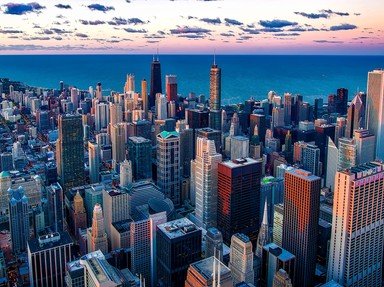Quiz Answer Key and Fun Facts
1. Glastonbury is linked in myth to King Arthur and also to which Biblical figure?
2. The photo may not look much like a tower, but it does show a ballroom associated with an iconic British tower found in which seaside resort?
3. The picture shows an Irish round tower, examples of which can also be seen in Scotland and on the Isle of Man. What, according to their Irish name of cloigtheach, was their original purpose?
4. The crooked spire on this Chesterfield Church has several folklore tales to explain the reason for the twisting. Which of these is one of them?
5. The photo shows an example of a Martello tower. A series of these towers was built around the coast of Britain to guard against invasion from whom?
6. Originally intended to be a chimney for a local factory, Wainhouse Tower was never used for that purpose and is now described as the world's tallest folly.
7. The Pierhead Building in the picture, which now houses a museum and visitor centre, can be seen in which major British city?
8. The picture shows the Tom Tower, entrance to one of Oxford's colleges. It was built in 1681/2 to the design of which famed architect?
9. Its London counterpart may be better known, but this monument at the end of Edinburgh's Princes Street was built to commemorate which man?
10. Built to reflect the area's naval history, in which port would you see the magnificent tower in the photo?
Source: Author
rossian
This quiz was reviewed by FunTrivia editor
stedman before going online.
Any errors found in FunTrivia content are routinely corrected through our feedback system.

